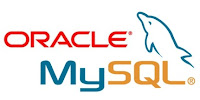OpenSourse - Free Databases for Linux Operating System

Oracle's MySQL Oracle's MySQL is one of the most popular GPL'ed databases for the GNU/Linux and BSD platforms. MySQL database is popular because of fast performance, high reliability, ease of use, and dramatic cost savings. SQLite SQLite Embeddable SQL Database Engine is a C library that implements a self contained, serverless, zero configuration, transactional SQL database engine. This allows application programmers to embed an SQL server directly into their application. SQLite is the most widely deployed SQL database engine in the world. The source code for SQLite is in the public domain. The latest version of SQLite is 3.7.3 and it is recommended for all new development. Mckoi SQL Mckoi SQL Database is an Open Source SQL Database System written in Java. Supports transactions, referential integrity, triggers, indexes, Java specific enhancements. Supports multi-threaded, multi-client operation; embedable. Released under the GPL license. This is probably the mos...


